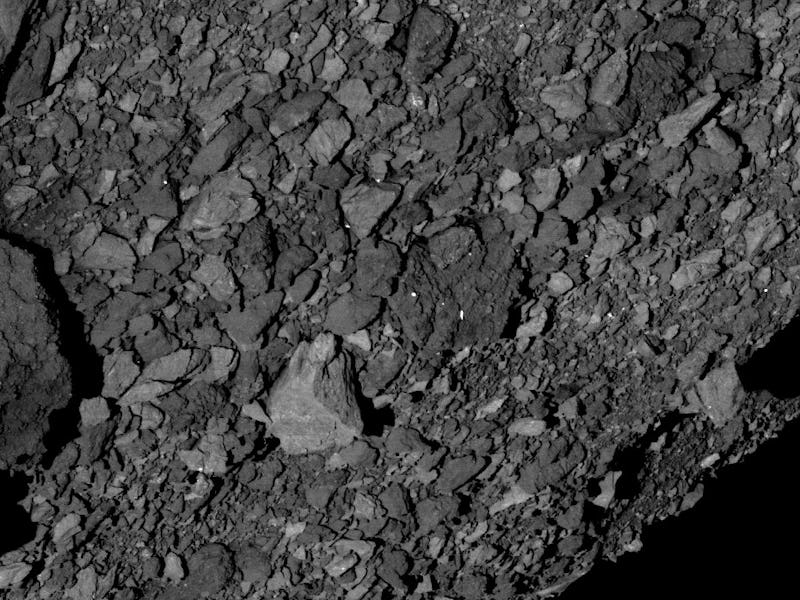An asteroid the size of a bus will zoom past Earth next month
2014 YE15 will swing by Earth the first week of 2022.

With the start of a new year, people are anxious about any new surprises. Luckily the first asteroid flyby of the year is a meager, bus-sized asteroid that poses little to no threat to Earth except for the chance to marvel at these flying rocks as they make their way close to the Sun.
Asteroid 2014 YE15 stretches about 42 feet. That’s about the same size as a bus or twice as tall as a giraffe.
That’s relatively small compared to other asteroids that regularly visit our Solar System. Just last month, an asteroid as tall as Dubai’s Burj Khalifa (the tallest building in the world) zoomed past Earth.
The asteroid will make its closest approach to Earth on January 6, coming as close as 4,600,000 miles from our planet, about 19 times the distance between Earth and the Moon, which is 239,000 miles.
An illustration that shows asteroid 2014 YE15 trajectory around the Sun, making a close approach to Earth on its way.
Asteroid 2014 YE15 is part of a group known as Aten asteroids, a group of asteroids that orbit the Sun between Earth and Mercury.
Is asteroid 2014 YE15 potentially hazardous?
NASA keeps a close watch on asteroids that make close approaches to Earth.
NASA’s Near Earth Object program puts together a list of asteroids that swing by our Solar System and calculates the likelihood of an impact with Earth for each of them over the next 100 years.
If an asteroid comes within 4.6 million miles, and is larger than about 150 meters, then it is deemed a potentially hazardous object, according to NASA. But its size makes it not considered a hazardous object, and at its current distance, asteroid 2014 YE15 is no threat to Earth.
Asteroids of that size can cause severe damage if they crash onto Earth. In 1908, an asteroid about 120 feet across entered the atmosphere above Siberia, traveling at about 33,500 miles per hour, and exploded in the sky. The asteroid released energy equivalent to about 185 Hiroshima bombs, flattening entire forests.
2014 YE15: Discovery and size
The object was first identified at the Mt. Lemmon Observatory during a 2014 survey of near-Earth objects, according to the Minor Planet Center. It was found on December 28 of that year, just two days before it flew about three times the Earth-Moon distance.
At a size of 42 feet, the tiny space rock can still pack a punch if it were to collide with Earth. In 2013, a 66-foot asteroid exploded over Chelyabinsk Oblast, Russia with the same energy as about 26 to 33 atomic bomb blasts. It shattered windows, left fragments strewn across the region, damaged a few buildings, and left 1,500 people seeking medical attention due to after-effects like broken glass.
Why do we observe asteroids?
Aside from protecting the Earth from potential impacts, studying asteroids also provides clues about the Solar System’s origin story.
Asteroids are made up of the remanent material of the Solar System’s formation, containing the building blocks of the planets and moons. By studying asteroids, scientists can learn more about how Earth formed and how the different worlds of the Solar System came to be.
Asteroids also have precious resources like iron, nickel, and other minerals. Although asteroid mining is not a fully developed idea yet, scientists are currently identifying asteroids that would make for prime targets.
This article was originally published on